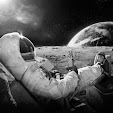Imagine digging through a lot of photos everytime you decide to send a photo from your smart phone to a whatsapp contact or to your facebook/twitter account.
There has to be an easier way to filter out photos containing the required content(somebody's face) in the camera roll.
This blog post is about a naive approach to solving this issue of search for your photos.
OpenCV Cascade Classifier tutorial
static Mat cropFaceFromImg(InputArray _frame)
{
Mat testFrame = _frame.getMat();
std::vector<Rect> faces;
Mat frame_gray;
std::vector<Mat> croppedFaces;
Mat resizedFace;//dst image
cvtColor( testFrame, frame_gray, CV_BGR2GRAY );
//equalizeHist( frame_gray, frame_gray );
//-- Detect faces
face_cascade.detectMultiScale( frame_gray, faces, 1.1, 2, 0|CV_HAAR_SCALE_IMAGE, Size(1, 1) );
for( size_t i = 0; i < faces.size(); i++ )
{
Mat faceImg;
Rect rect = Rect( faces[i].x + (faces[i].width/6), faces[i].y , faces[i].width*2/3, faces[i].height ); // ROI rect in srcImg
frame_gray(rect).copyTo(faceImg);
Size size(100,100);//the dst image size,e.g.100x100
resize(faceImg,resizedFace,size);//resize image
croppedFaces.push_back(resizedFace);
}
//imshow("ResizedFace", resizedFace);
//waitKey(0);
return resizedFace;
}
3. Calculate histogram for the image.
The essence of this step is calculating a pixel with its neighboring 8 pixels and assigning a 8 bit binary value for that pixel H(I) based on whether the neighboring pixel is darker or lighter than the pixel at the center.
Related code to calculate histogram bins [From OpenCV src code]
//------------------------------------------------------------------------------
// cv::elbp
//------------------------------------------------------------------------------
template <typename _Tp> static
inline void elbp_(InputArray _src, OutputArray _dst, int radius, int neighbors) {
//get matrices
Mat src = _src.getMat();
// allocate memory for result
_dst.create(src.rows-2*radius, src.cols-2*radius, CV_32SC1);
Mat dst = _dst.getMat();
// zero
dst.setTo(0);
for(int n=0; n<neighbors; n++) {
// sample points
float x = static_cast<float>(radius * cos(2.0*CV_PI*n/static_cast<float>(neighbors)));
float y = static_cast<float>(-radius * sin(2.0*CV_PI*n/static_cast<float>(neighbors)));
// relative indices
int fx = static_cast<int>(floor(x));
int fy = static_cast<int>(floor(y));
int cx = static_cast<int>(ceil(x));
int cy = static_cast<int>(ceil(y));
// fractional part
float ty = y - fy;
float tx = x - fx;
// set interpolation weights
float w1 = (1 - tx) * (1 - ty);
float w2 = tx * (1 - ty);
float w3 = (1 - tx) * ty;
float w4 = tx * ty;
// iterate through your data
for(int i=radius; i < src.rows-radius;i++) {
for(int j=radius;j < src.cols-radius;j++) {
// calculate interpolated value
float t = static_cast<float>(w1*src.at<_Tp>(i+fy,j+fx) + w2*src.at<_Tp>(i+fy,j+cx) + w3*src.at<_Tp>(i+cy,j+fx) + w4*src.at<_Tp>(i+cy,j+cx));
// floating point precision, so check some machine-dependent epsilon
dst.at<int>(i-radius,j-radius) += ((t > src.at<_Tp>(i,j)) || (std::abs(t-src.at<_Tp>(i,j)) < std::numeric_limits<float>::epsilon())) << n;
}
}
}
}
5. If histogram correlation shows more than 0.6, the image can be considered belonging to the same person.
Pros :-
1. A single step classifier which can be made better as the search queries increase by combining data sets of similar face searches.
2. No face modeling done and hence relies on the simplicity of histogram creation and comparison.
3. Good for mobile platform analysis
Cons:-
1. A naive classifier of 0.6 threshold so chances to get false positives and false negatives are high.
2. No face modeling done so critical features of the face may be neglected due to the basic histogram approach.
Note:- This is still a naive way to filter faces but the algorithm can be made adaptive as with each iteration of searches, we can keep improve the accuracy by combining search results for the same person and filtering out the faces which do not fall into the intersection set.
The github repo(source code) for the above can be found
here
.JPG)
.JPG)
.JPG)
.JPG)
.JPG)
.JPG)
.JPG)
.JPG)
.JPG)
.JPG)








.JPG)
.JPG)

.JPG)
.JPG)
.JPG)
.JPG)
.JPG)
.JPG)












.JPG)

0 comments :